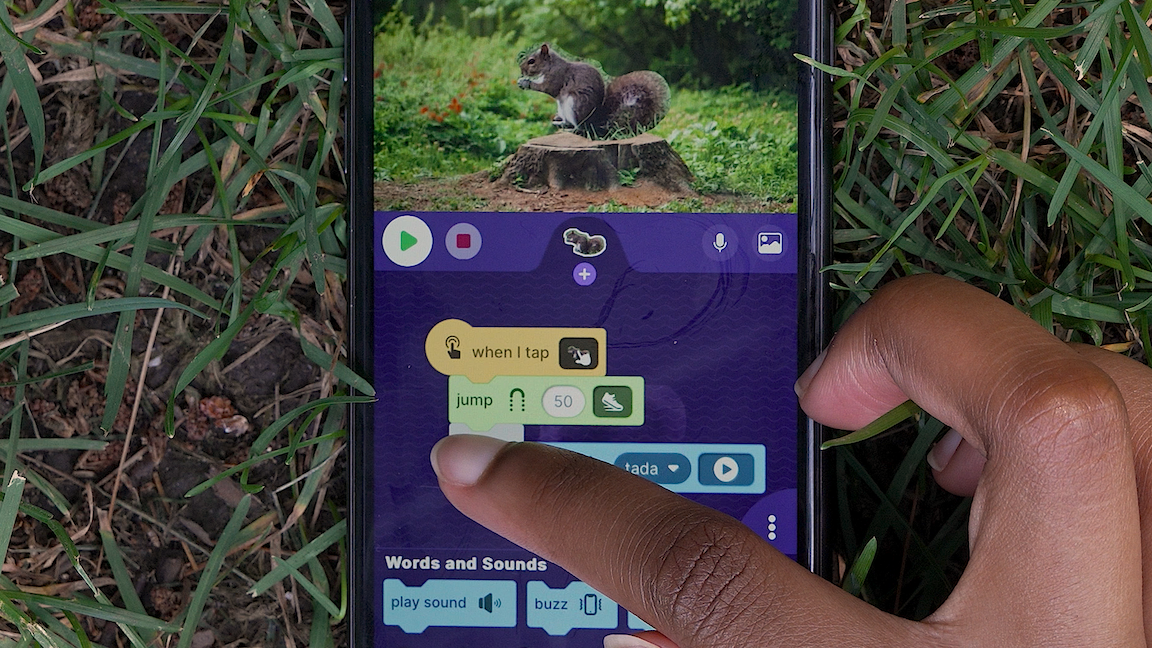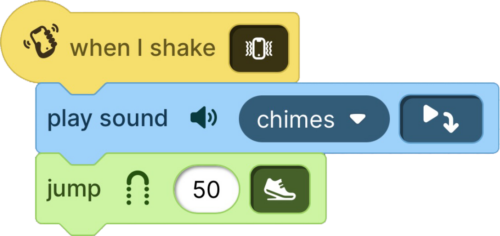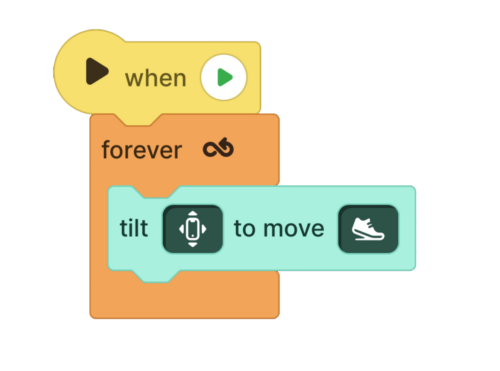Create anytime, anywhere with OctoStudio
Today our friends Mitch Resnick and Natalie Rusk from MIT’s Lifelong Kindergarten group tell you about OctoStudio, their free mobile app for children to create with code. Find their companion article for teachers in the upcoming issue of Hello World magazine, out for free on Monday 1 July.
When people see our new OctoStudio coding app, they often say that it reminds them of Scratch, the world’s most popular coding platform for kids. That’s not surprising, since the group of us developing OctoStudio were also involved in creating Scratch, with its distinctive building-block approach to programming. But there’s an important difference.

The difference is that we designed OctoStudio specifically for mobile phones and tablets, based on requests from educators in communities where children and families don’t have access to laptops and desktop computers, but do have access to mobile devices.
OctoStudio takes advantage of special features of mobile phones and tablets, such as built-in sensors, so young people can create projects that respond to shaking or tilting, or even ‘beam’ signals between devices. And because of the small size of mobile devices, children and families can create projects anytime anywhere, and integrate digital coding with physical making.
OctoStudio makes it easy for beginners to start creating. Children can choose a character from a diverse collection of emojis, draw their own in the OctoStudio paint editor, or take and edit a photo. With just a couple coding blocks, they can make their characters move, jump, speak, or glow — and respond to shaking, tilting, or tapping on the phone or tablet:


Since our Lifelong Kindergarten group at the MIT Media Lab launched OctoStudio as a free app in October 2023, we’ve been delighted by the creativity and diversity of projects that children around the world have created with OctoStudio. As examples, we’d like to share with you three different projects from three different continents.
Getting active with OctoStudio
When Xavier, a 10-year-old in Rwanda, started using OctoStudio, he was intrigued with the ‘When I shake’ block. He realized that he could create a step tracker project, by sensing how the phone shook each time he took a step.
From the emoji library in OctoStudio, Xavier selected a rabbit, and he programmed it to grow a little bit each time he took a step. The more steps, the bigger the rabbit. To test the project, Xavier ran around in a circle. When he looked at the rabbit again, he saw how big it had grown and exclaimed: “Now it’s mega huge!” After finishing his project, Xavier made and posted a video tutorial to show others how to make their own step tracker using only 5 coding blocks.
Making creatures come to life on screen
One popular way to get started with OctoStudio is to make a favorite animal out of craft materials, take a photo of it, then bring your creation to life on the screen with OctoStudio coding blocks. As part of the Brazilian Creative Learning Network, educators Renato Barboza and Simone Lederman offer creative learning workshops in which children design creatures using a combination of natural materials and modeling clay. In these ‘fantastical creatures’ workshops, facilitators ask questions to encourage participants to design not only the creatures, but also develop ideas about how their creatures interact within their environment.

For example, two sisters created imaginary creatures, one with long sticks for arms, the other with big eyes and wings made from leaves. The sisters then took photos and made their creatures come to life in OctoStudio, making them jump, glow, and fly. They recorded sounds and explained more about their creatures, including where they live and what they like to eat.

Beaming between devices
OctoStudio also opens up the possibility of projects involving multiple mobile devices, using the new ‘beam’ block to send signals between the devices (via Bluetooth). For example, children can make a character in a story or game look like it’s jumping from one device to another by sending a beam signal when the character reaches the edge of the screen.
Thawin, an elementary school student in Thailand, decided to use the ‘beam’ block to create a project about caring for the environment. He embedded one tablet in a cardboard cutout of a watering can, and programmed it to beam a signal each time he shook it as if he were sprinkling water. Then, he added a tree emoji to another tablet, and programmed the tree to grow each time it received a beam signal. He proudly shared his project with his classmates: each time someone shook the watering can, the tree grew.
Get started with OctoStudio
To get started with OctoStudio, you can download it for free from app stores for Android and iOS phones and tablets. The app is translated into more than 25 languages, and comes with sample projects and mini-tutorials.
Here are some resources for learning and exploring more:
- The octostudio.org website provides a reference guide and FAQ
- The OctoStudio channel on YouTube offers a variety of inspiring tutorials and examples
- For project ideas using physical materials, visit OctoStudio Explorations from the Tinkering Studio
- For updates, sign up for the OctoStudio mailing list
You can share your OctoStudio stories, photos, and videos on social media using @octostudioapp or #octostudio. We can’t wait to hear about your and your children’s experiences!
The post Create anytime, anywhere with OctoStudio appeared first on Raspberry Pi Foundation.
